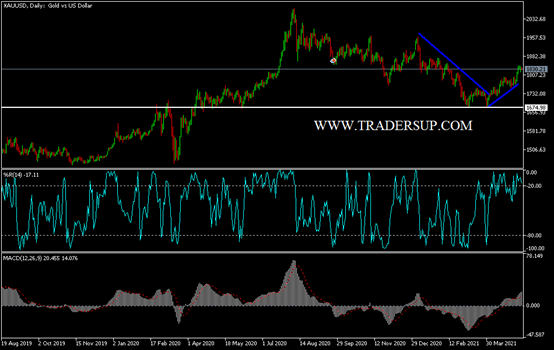In light of the state of cautious anticipation and the search for more stimulus, the price of gold fell to the level of 1818 dollars an ounce, to cut off the path of recent gains, which moved on its impact to the resistance level of 1845 dollars per ounce, its highest in three months. And it stabilizes around the level of 1835 dollars an ounce at the time of writing the analysis pending the announcement of the US inflation figures, which in turn strongly affect the US dollar and consequently the price of the yellow metal. In general, the increase in US bond yields has weakened demand for the safe-haven yellow metal. The yield on the 10-year US Treasury note rose to 1.62%. At the same time, the weak dollar helped limit the decline in gold. The US dollar index, DXY, which fell to 89.98, recovered to 90.13. In the same performance of gold, silver futures closed higher at 27.667 dollars an ounce, while copper futures settled at 4.7620 dollars a pound.
Investors today are looking to US inflation data and Fed officials' speeches this week to see how the authorities are likely to respond to the declining risks posed by the coronavirus in some major economies.
The US CPI report, due to be released on Wednesday, is expected to show that prices continued to rise in April. As inflation concerns mount, it is feared that the US central bank will begin to rein in its massive accommodative monetary policy sooner than expected.
Chicago Fed Chairman Charles Evans told CNBC that he would be relieved if inflation continued to rise slightly for a while.
Forex analysts note that the US dollar showed increased sensitivity to inflation reports in 2021. Barclays Bank analysts believe that the dollar index fell in the first 30 minutes after the last three CPI reports. Bank analysts expect the core CPI to rise 0.05% month over month in April (+ 3.4% year over year) and expect core CPI to rise 0.20% month over month (+ 2.2% year on year), Driven by rigidity in commodity inflation, price pressures in the services sector.
Inflation expectations have risen sharply in 2021 - not just in the US but globally - partly driven by supply constraints caused by the coronavirus. For example, the supply of chips is a major concern of the global manufacturing chain and automobile production has been hit hard. The sharp rise in commodity prices is another driver of the price increase, not only through higher oil prices but also higher copper and iron ore prices.
A massive fiscal stimulus designed to spur economies off the setbacks caused by the Covid-19 virus is fueling demand for the components on which the infrastructure booms are built, especially in China.
According to the technical analysis of gold: On the graph of the daily time frame, the stability of the price of gold above the psychological resistance of 1800 dollars an ounce is still a catalyst for bulls in controlling performance and in the event that it gets more momentum, the resistance levels 1852, 1869 and 1885 may be the next targets for the bulls, which are supportive At the same time, technical indicators head towards strong overbought levels. The price of gold will exit from its current ascending channel in the event of profit-taking selling at any time and the gold price moves towards the support level of $ 1783.
The price of gold will be affected today by the level of the dollar after the announcement of US inflation figures and the extent of investor appetite for risk or not

